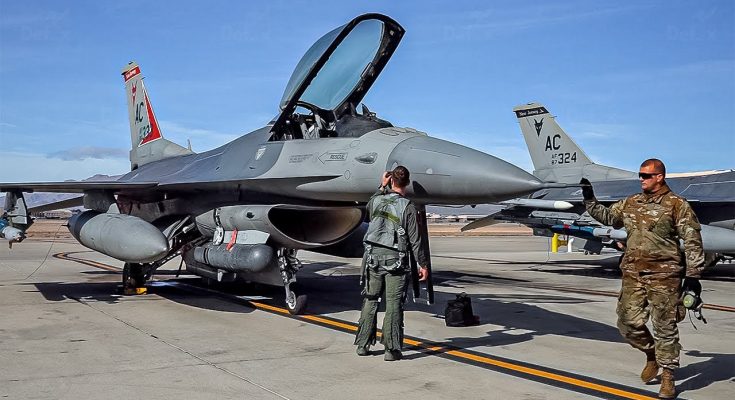F-16 Fighting Falcon Fighter Jet Preparations & Takeoff – U.S. Air Force in Action
The F-16 Fighting Falcon, often called the “Viper” by its pilots, remains one of the most versatile and widely deployed fighter jets in the U.S. Air Force inventory. Known for its agility, speed, and multirole combat capabilities, the F-16 continues to serve as a frontline asset in operations across the globe. Each sortie begins with a meticulously orchestrated sequence of preparation, inspection, and takeoff, involving skilled ground crews, pilots, and support personnel — all working in perfect synchronization to get the jet mission-ready.
Pre-Flight Preparations
Mission readiness begins well before the pilot steps into the cockpit. Ground crews initiate a series of pre-flight inspections, checking everything from the aircraft’s control surfaces and landing gear to fuel levels and armament loadouts. These inspections are critical for mission success and pilot safety. Any anomalies are addressed immediately by dedicated maintenance teams, who specialize in avionics, propulsion, hydraulics, and weapons systems.
Concurrently, weapons load crews arm the jet with a mission-specific payload. This could include AIM-120 AMRAAMs for air-to-air engagements, JDAMs for precision strike, or AGM-65 Mavericks for close air support. The F-16’s 11 hardpoints allow for a diverse mix of weapons and external fuel tanks, tailored to each mission profile.
Pilot Briefing & Cockpit Checks
While the jet is being prepared, the pilot receives a detailed mission briefing covering weather conditions, threat assessments, airspace control measures, and flight routes. Upon arriving at the aircraft, the pilot conducts a walk-around inspection — a visual confirmation that the jet is cleared for flight.
Climbing into the single-seat cockpit, the pilot straps into the ejection seat and begins a series of cockpit startup procedures. The F-16’s glass cockpit and Head-Up Display (HUD) provide critical data at a glance, from altitude and airspeed to weapons status. After systems checks and INS alignment, the pilot communicates with the tower for taxi clearance.
Taxi & Final Checks
Once engines are spooled up and cleared, the F-16 taxis from the hardened aircraft shelter or ramp to the runway. At the end of the taxiway, a final “last chance” check is conducted by ground crew — a last visual inspection to ensure everything is secure before takeoff. This includes verifying that all weapons are armed correctly and control surfaces respond normally.
Takeoff and Mission Launch
With takeoff clearance granted, the pilot lines up the F-16 on the runway. Throttling up the General Electric F110 or Pratt & Whitney F100 engine to full afterburner, the jet accelerates rapidly, often lifting off within seconds. With landing gear retracted and the jet climbing into the sky, the mission is underway.
The F-16’s thrust-to-weight ratio and fly-by-wire controls make it exceptionally agile, capable of quick climbs, high-G maneuvers, and supersonic speeds. Whether heading into a training sortie or live combat operation, each takeoff represents the culmination of precision, professionalism, and airpower excellence.
From pre-flight to takeoff, every phase of F-16 operations reflects the U.S. Air Force’s commitment to readiness and superiority in the air — a seamless fusion of people, technology, and mission focus.



